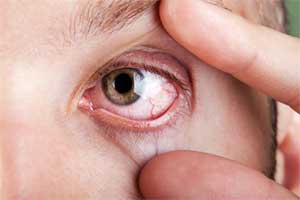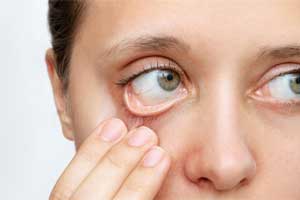July is Dry Eye Awareness Month!
It's dry eye awareness month. Let's explore what dry eye is, its causes, symptoms, and how you can manage and
prevent it.
What is Dry Eye Disease?
Dry eye disease occurs when your eyes don't produce enough tears or when the tears evaporate too quickly.
Tears are essential for maintaining the health of the front surface of the eye and for providing clear vision.
When the delicate balance of tear production and maintenance is disrupted, it can lead to dry eye symptoms.
Common Causes of Dry Eye

Dry eye can be caused by various factors, including:
1. Age: As we age, tear production tends to decrease.
2. Environmental Factors: Wind, smoke, and dry climates can increase tear evaporation.
3. Screen Time: Prolonged use of computers, smartphones, and other digital devices can reduce blinking rates,
leading to dry eyes.
4. Contact Lenses: Wearing contact lenses for extended periods can contribute to dry eye symptoms.
5. Medications: Certain medications, such as antihistamines, antidepressants, and blood pressure medications,
can reduce tear production.
6. Medical Conditions: Conditions like Sjögren's syndrome, rheumatoid arthritis, and diabetes can affect tear
production.
Symptoms of Dry Eye
Dry eye symptoms can vary in severity and may include:
1. A stinging, burning, or scratchy sensation in the eyes Sensitivity to light
2. Redness of the eyes
3. A feeling of having something in your eyes (foreign body sensation)
4. Difficulty wearing contact lenses
5. Difficulty with nighttime driving
6. Watery eyes, which is the body's response to the irritation of dry eyes

Managing and Preventing Dry Eye
While dry eye can be uncomfortable, there are several strategies to manage and prevent it:
1. Maintain Eye Hygiene: Regularly clean your eyelids and use a warm compress to help unblock oil glands in
your eyelids.
2. Adjust Your Environment: Use a humidifier to add moisture to the air, especially in dry climates or during
winter.
3. Take Breaks from Screens: Follow the 20-20-20 rule: every 20 minutes, take a 20-second break and look at
something 20 feet away.
4. Stay Hydrated: Drink plenty of water throughout the day to stay hydrated.
5. Use Artificial Tears: Over-the-counter artificial tears can provide temporary relief from dry eye
symptoms.
6. Consult an Eye Specialist: If your symptoms persist, it’s essential to consult an eye care professional.
They can prescribe treatments such as prescription eye drops, punctal plugs, or other therapies tailored to
your specific needs.
Your eyes are precious, and taking care of them should always be a priority.
For more information or to schedule an appointment, feel free to contact us. Let's work together to keep your
eyes comfortable and healthy!